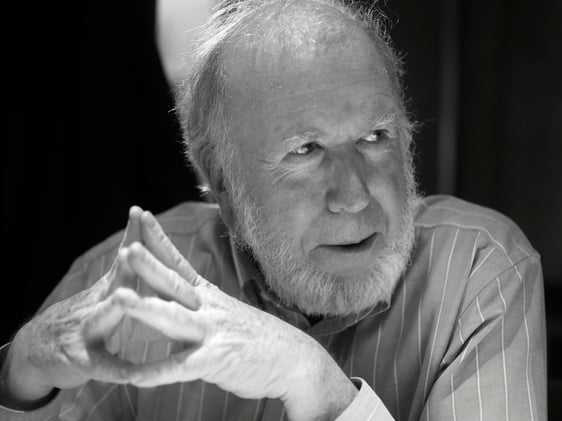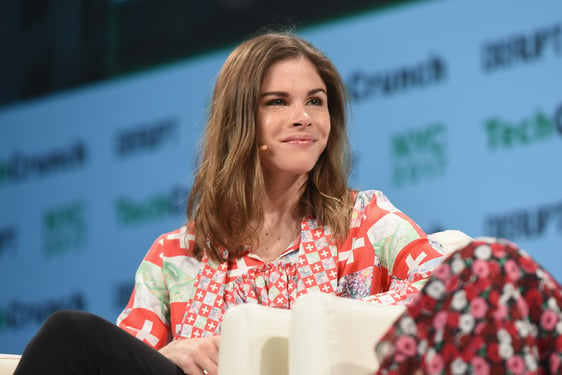Blog
Paul Archer: Are super fans the secret to brand building in 2020?
Back in 2008, Kevin Kelly, the founder of Wired Magazine and all-round future gazer, wrote an essay called ‘1,000 True Fans’ on how an individual, band, artist or craft person only needs 1,000 true fans to make a living.
This was at the dawn of the social era of the internet, before crowdfunding and Kickstarter, before Instagram and long before anyone had ever uttered the term ‘Influencer’ with a capital I. If you haven’t read it, it’s a must-read for any scholars on how commerce flows through the internet. But, on revisiting it recently, I found it particularly interesting when used as a lens to view the early stage brands I’ve worked with over the last few years.
 Wired Magazine Founder Kevin Kelly - Image Source: Christopher Michel
Wired Magazine Founder Kevin Kelly - Image Source: Christopher Michel
Today, the essay’s message could not be more true. From early YouTubers who began to find ways to monetize their content for a small and deeply passionate audience (that would eventually scale to many many millions), to the influencers showcasing their latest makeup look (or getting a long-suffering boyfriend to photograph their back as they stand before a beautiful panorama in Bali...), the ability to make a career and earn from the internet as an individual is now an industry worth billions. Particularly with the rise of platforms like Patreon and Kickstarter that have enabled small but dedicated communities of fans to dictate the livelihood and success of an individual.
Brands in 2020 are communities first, brands Later
What's particularly interesting about Kelly's essay is that he outlines how the mandatory middlemen of the 20th century - the record company, the agencies, the retail stores - can now be circumvented as the individual can engage in deep, meaningful relationships with their true fans and capture almost 100% of that value. It is this phenomenon that is driving the D2C retail brands of today, as a brand of today is a community of fans first, and a producer of products later. The next generation of great brands seem to share this similarity. The likes of Glossier, lululemon, Everlane and Tesla have developed incredibly strong communities of brand fans who find personal belonging in the core mission purpose and values of these brands. Their customers find kindred spirits in the other customers and there is almost a sense of primal community when they consume and use their products. These brands have such a powerful community of true fans that they could launch anything - a movie, an app… a range of toilet cleaning fluid, anything - and the fans will still buy it.
 Glossier Founder Emily Weiss - Image Source: Tech Crunch
Glossier Founder Emily Weiss - Image Source: Tech Crunch
Glossier in particular are the perfect example as they started as a community built around an blog long before they launched products. As an inspirational, smart woman, founder Emily Weiss personifies the brand ideals and leads the community. With her short stint on the TV show The Hills, she combines it all with just the right sprinkling of aspiration and glamour for her firmly millennial audience. Now they sell out limited edition ranges in seconds, have lines around the block at every store they open, and in my opinion, within the next few years will be worth as much (if not more) than the likes of household brands like Estee Lauder.
The power of story
Today’s digital natives seek personification and stories. They want to know the story of a product, and stories are always personal, which makes the concept of customers evolving into fans even more interesting. Everything we eat, wear and consume must have a story now. Perhaps it is the result of large faceless corporations selling us everything for decades, or perhaps it’s the intrinsic human desire to stand out and be a part of the narrative. Either way, the result is that the next generation of brands will all have a face, a personality and a story to tell.
The path to getting 1,000 true superfans will require brands to align all their values, actions, stories and personality into something that resonates with customers beyond the products that are being sold. Building this authentic and passionate community leads to a lot of great outcomes for brands as well—it demands accountability and transparent communication; it requires brands to build exceptional products and exceptional customer experiences, and it invites customers to join in the process of building the brand directly.

User generated content from passionate Frugi superfans
What else does having the goal of 1,000 true fans mean for brands that are starting out? Well firstly they need to be recognised and understood truly by the first 1,000 superfans before they can diversify out. Many brands of direct to consumer products who sell a single product wrestle with when to launch a second product. If Kelly is correct, once you have your core 1,000, it doesn't matter where you decide to go next. A great product and 1,000 fans would create enough buzz to allow you to branch out. They will also be giving you constant feedback allowing you to intimately know your customer, so therefore without them, working out what your next step is becomes infinitely harder.
How to segment and work with your 1,000 true brand fans
At Duel, we spend a lot of time discussing what it means to be a fan of a brand. Kelly calls these 1,000 fans, super fans. They are defined as people who will buy everything you do. They will buy the DVD version of the best-of content that is freely available already on YouTube. They will plan to get the limited edition colours and they’ll pay for the opportunity to meet the people they admire in person.
When you put this into the context of brands, these superfans are responsible for the majority of organic growth, they are your advocates. However, very rarely do they get the special attention they deserve. At best they live as VIP segments in a CRM, generally based upon how much they spend. But it's these fans - who in many cases will not show up based upon the revenue generated because they cannot afford to buy more products - who live and breathe the brand. They are the ones who tell everybody they know about it and they are the most powerful engine of word of mouth and free customer acquisition available to any brand. They will also help to develop the best products, create content, drive feedback for research, assist other customers, and pretty much do any task you can imagine your marketing team doing.
We've developed and designed advocacy programs for 50+ brands that help them celebrate and reward these most important of customers. The question we are desperately trying to figure out is how does a brand convert their top 10% or 20% of customers who are fans into super fans? Does this start with loyal, regular purchasers? Or is it dependent on engagement through whatever channel the brand uses like social media or e-mail? Of course it must be dependent on having a great product and service, but these are your fans already so that is a given. So what do you need to do to nudge them towards the sacred title of super fan?
Please do get in touch or post in the comment section if you have any tips towards mastering the art or driving fans into superfans. Which brands do you think do it well?


